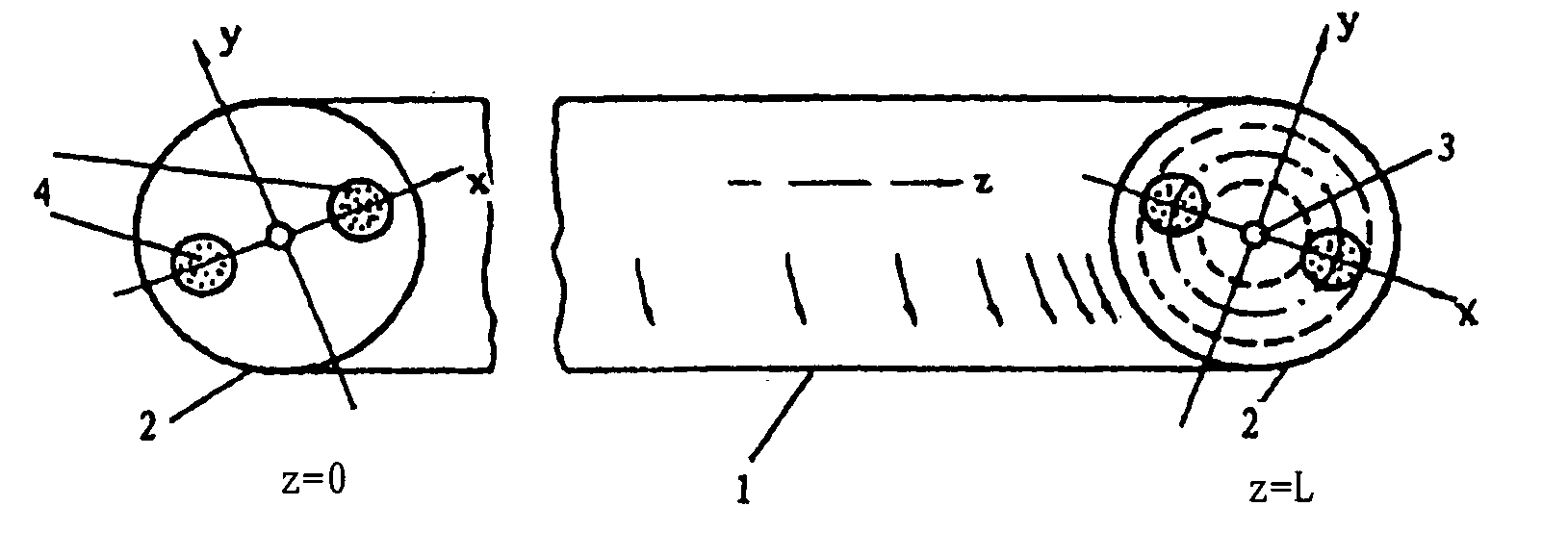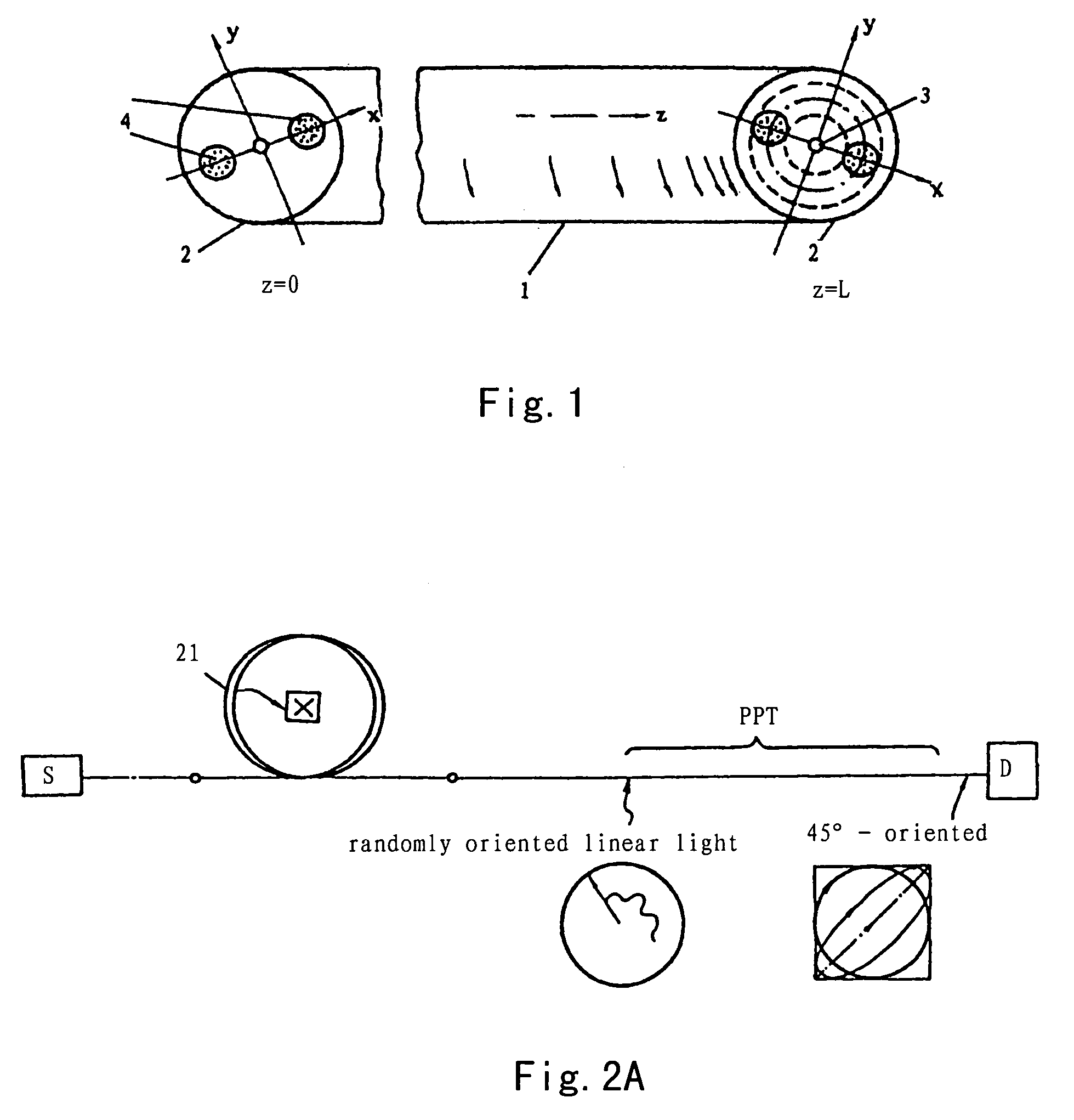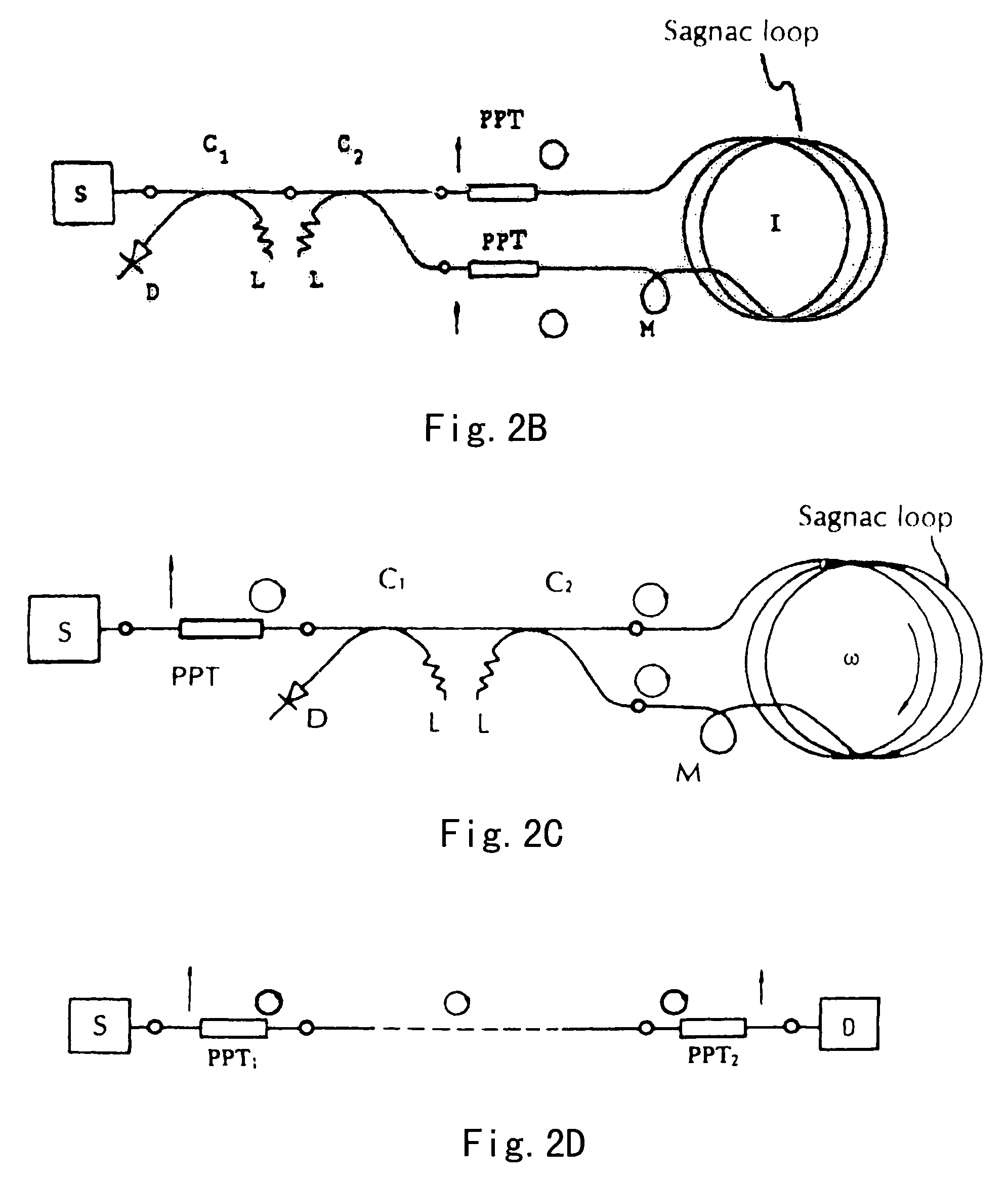Broad-band fiber-optic wave plates
a fiber-optic wave plate and wide-band technology, applied in the field of polarization-transforming fibers and specialized fibers, can solve the problems of large bulky overall composite layout, vibration-sensitive, scarcely practical to use a short hi-bi fiber section of very precise length to serve the purpose of a desired sop transformation
- Summary
- Abstract
- Description
- Claims
- Application Information
AI Technical Summary
Benefits of technology
Problems solved by technology
Method used
Image
Examples
first embodiment
[0036]According to the invention, a broad-band fiber-optic wave plate is provided which is characterized by the specification of a broad-band fiber-optic quarter wave plate, called a PPT (short for practical polarization transformer) or simply PT. As afore-said, a fiber-optic wave plate is a section of variably spun birefringent optical fiber. The structural feature of a quarter wave plate is that the spin-rate varies slowly along the fiber section from zero to fast, or conversely from fast to zero. A PPT is thus an asymmetrical fiber structure comprising four different versions in view of the circumstance that either the unspun end or the fast-spun end can act as the input, and in each case, the sense of spin can be either clockwise or anticlockwise.
[0037]With reference to FIG. 1, a schematic diagram of the structure of a broad-band fiber-optic quarter wave plate is shown in the form of a variably spun birefringent optical fiber with a spin-rate varying from zero to fast, wherein t...
second embodiment
[0051]According to the invention, a broad-band fiber-optic wave plate is provided which is characterized by the specification of a broad-band fiber-optic half wave plate. With reference to FIG. 3, such fiber-optic wave plate is a section of spun birefringent optical fiber with one end being fast-spun and the other end being fast-spun but in opposite sense, and with a spin-rate varying slowly from fast to zero, and thence in opposite sense of spinning from zero to fast. The two subsections of fiber, fast-to-zero and zero-to-fast, are not required to be exactly antisymmetrical in their spin-rate functions. What is required is that both fast-spun ends are spun at sufficiently fast rates, and the variation of the spin-rate is always slow enough. Two behaviors of a fiber-optic half wave plate are of interest. One behavior is that a linear light incident onto one end of this wave plate is transformed into a linear light at the other end with a phase shift of π. Another behavior is that, w...
third embodiment
[0052]According to the invention, a broad-band fiber-optic wave plate is provided which is characterized by the specification of a broad-band fiber-optic full wave plate. With reference to FIG. 4A, one variety of fiber-optic full wave plate is a section of spun birefringent optical fiber with one end being fast-spun and the other end being fast-spun in the same sense, wherein the spin-rate variation from fast to zero in the first subsection and in the same sense from zero to fast in the second subsection is always sufficiently slow over the entire length of the fiber. With reference to FIG. 4B, another variety of fiber-optic full wave plate is a section of birefringent optical fiber whose spin-rate varies from zero to fast in the first subsection and thence continuously from the attained fast value to zero. The SOP transforms of interest with respect to said two varieties of fiber-optic full wave plate are listed in Table 4.
[0053]
TABLE 4Polarization Transforms of Fiber-Optic Full Wa...
PUM
 Login to View More
Login to View More Abstract
Description
Claims
Application Information
 Login to View More
Login to View More - R&D
- Intellectual Property
- Life Sciences
- Materials
- Tech Scout
- Unparalleled Data Quality
- Higher Quality Content
- 60% Fewer Hallucinations
Browse by: Latest US Patents, China's latest patents, Technical Efficacy Thesaurus, Application Domain, Technology Topic, Popular Technical Reports.
© 2025 PatSnap. All rights reserved.Legal|Privacy policy|Modern Slavery Act Transparency Statement|Sitemap|About US| Contact US: help@patsnap.com



